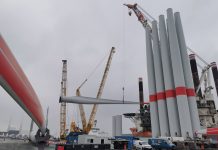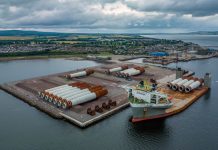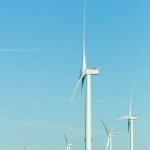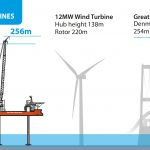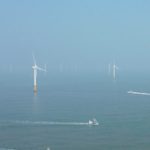Ireland’s largest Phase One offshore wind project, Codling Wind Park, which will be off the County Wicklow coast, has confirmed a further 25 percent reduction in the number of turbines that will be required to deliver the project.
When the details of the project’s final design and layout were confirmed, the project reported a maximum of 75 and a minimum of 60 turbines. The minimum proposed turbine tip height had also been set at 288 meters or a maximum of 314 meters.
The development will still generate 1,300 MW of clean electricity, enough to power more than 1 million homes.

“This is one of the largest energy infrastructure investments ever seen in Ireland and a tremendously exciting one to work on,” said Scott Sutherland, project director. “As well as supplying over a quarter of Ireland’s 2030 offshore wind target, Codling Wind Park will support Irish energy independence, help stabilize the cost of electricity for Irish consumers and will displace 1.7 million tons of carbon. It will also help the country realize its enormous potential to become a world leader in offshore wind.
Through various rounds of public consultation, we have listened to the people of Wicklow Ringsend and Poolbeg and incorporated their feedback into the design where possible. The reduction and layout of the reduced number of turbines was always key in that regard.”
While the original estimate for the number of turbines required had been put at about 440, advances in wind-turbine technology and more efficient turbine models combined with a more detailed understanding of the wind-farm site, means a maximum of 75 turbines – a reduction of 83 percent – will now be required.
The project will be about 13 to 22 kilometers off the Co. Wicklow coast between Greystones and Wicklow Town.
The project will help Ireland meet more than 26 percent of its 2030 grid connected offshore wind targets while also helping the country achieve its target of generating 80 percent of its electricity from renewable energy by the same year.
When developed, Codling Wind Park will be Ireland’s largest offshore wind farm.
The project is expected to create more than 1,000 jobs in the construction phase and 75 new, long-term jobs associated with its proposed Operations and Maintenance Base.
More info www.codlingwindpark.ie
















